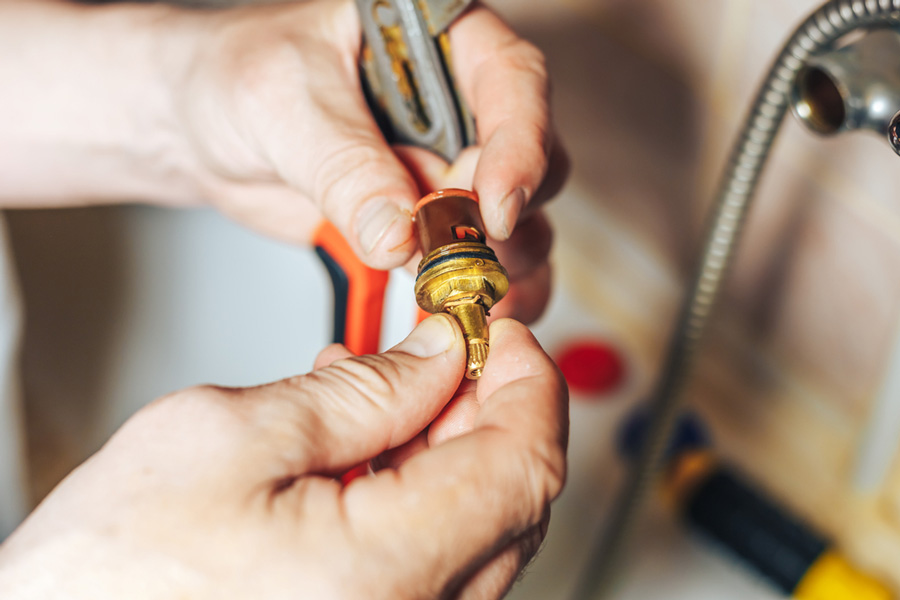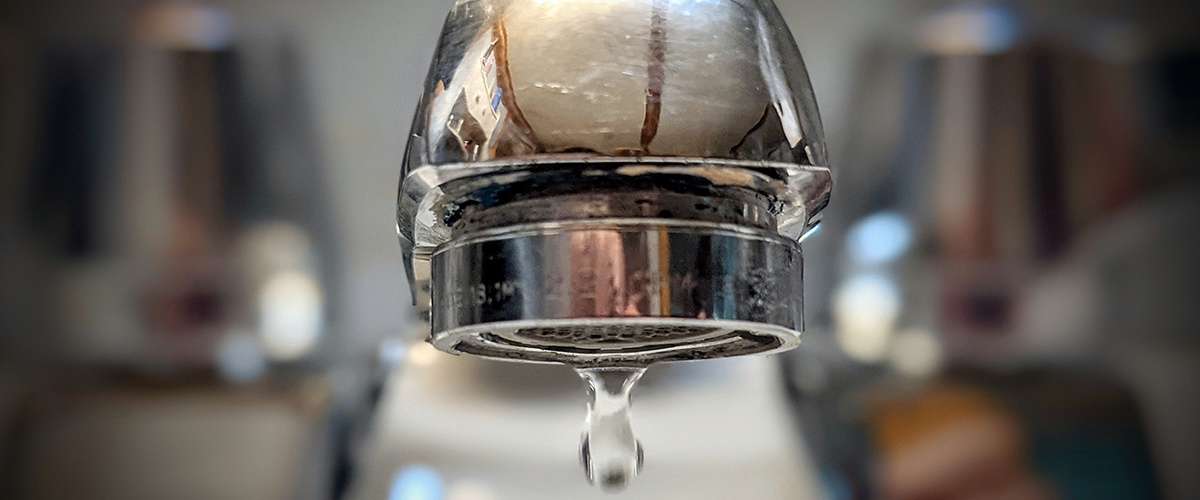Explanations Why It's Crucial to Resolve a Dripping Faucet
Book ServiceThey are making a few great annotation on Leaky Faucets: Why They Happen & What to Do About Them overall in this great article just below.

Leaking faucets may feel like a small trouble, but their effect goes beyond simply the aggravation of the noise. From wasting water to incurring unneeded financial expenses and health and wellness threats, ignoring a trickling tap can bring about different consequences. In this write-up, we'll explore why it's essential to address this typical household concern quickly and successfully.
Wastage of Water
Ecological Impact
Trickling faucets contribute dramatically to water waste. According to the Environmental Protection Agency (EPA), a single tap dripping at one drip per secondly can lose greater than 3,000 gallons of water per year. This not only strains water resources however additionally impacts environments and wildlife dependent on them.
Financial Expenses
Raised Water Bills
Beyond the environmental impact, trickling taps can blow up water expenses significantly. The built up wastage with time translates right into greater energy expenses, which can have been prevented with prompt repair work.
Prospective Home Damage
Furthermore, long term leaking can lead to damage to components and surfaces surrounding the tap. Water buildup can create staining, corrosion, and even structural problems if left neglected, causing added repair service prices.
Wellness Worries
Mold and Mold Growth
The constant existence of moisture from a trickling faucet creates an ideal environment for mold and mold development. These fungi not just jeopardize indoor air high quality yet additionally posture health risks, specifically for individuals with respiratory problems or allergies.
Waterborne Illness
Stagnant water in dripping faucets can come to be a breeding ground for microorganisms and other virus, enhancing the danger of waterborne diseases. Pollutants such as Legionella bacteria thrive in stagnant water, potentially leading to major diseases when consumed or breathed in.
DIY vs. Specialist Repair work
Benefits and drawbacks of Do It Yourself Repair Work
While some may try to fix a trickling faucet themselves, DIY repair services include their very own collection of obstacles. Without correct expertise and devices, do it yourself attempts can worsen the problem or result in incomplete repairs, lengthening the issue.
Advantages of Working With an Expert Plumber
Employing a professional plumber makes certain that the underlying root cause of the trickling faucet is addressed properly. Plumbing professionals possess the proficiency and devices to identify and repair faucet concerns effectively, conserving time and minimizing the danger of more damage.
Step-by-Step Guide to Dealing With a Dripping Faucet
Tools Called for
Prior to trying to take care of a trickling tap, collect the required devices, consisting of an adjustable wrench, screwdrivers, replacement parts (such as washers or cartridges), and plumber's tape.
Typical Tap Issues and Their Solutions
Determine the kind of faucet and the particular problem triggering the drip. Typical troubles consist of damaged washers, corroded valve seats, or defective O-rings. Refer to producer directions or online tutorials for detailed support on repair services.
Preventive Measures
Regular Upkeep Tips
To avoid dripping taps, do regular upkeep such as cleansing aerators, inspecting for leakages, and changing damaged components quickly. Additionally, consider installing water-saving tools or upgrading to more effective components.
Importance of Prompt Fixes
Dealing with leaking taps as soon as they're discovered protects against further water wastage and potential damages, ultimately conserving both water and money over time.
Effect On Home Worth
Perception of Well-Maintained Residential Or Commercial Property
Preserving a property in good condition, including addressing maintenance issues like dripping taps, boosts its regarded value and value amongst prospective buyers or tenants.
Impact on Resale Worth
Residences with well-kept plumbing components, including faucets, command greater resale values in the property market. Resolving leaking taps can contribute to a favorable perception throughout home assessments and negotiations.
Environmental Duty
Specific Contribution to Preservation
Taking obligation for dealing with dripping faucets straightens with more comprehensive efforts toward water preservation and environmental sustainability. Every individual's actions collectively make a considerable influence on maintaining valuable resources.
Sustainable Living Practices
By prioritizing timely repair services and embracing water-saving routines, people contribute to lasting living practices that profit both present and future generations.
Verdict
Dealing with a dripping tap exceeds plain convenience; it's a vital action toward conserving water, decreasing economic expenses, and protecting health and wellness and residential or commercial property. Whether through do it yourself repair services or professional help, acting to deal with leaking taps is a tiny yet impactful method to advertise responsible stewardship of resources and add to a healthier, much more lasting future.
How to Fix a Dripping or Leaky Faucet
A leaking faucet is one of the most common problems that homeowners encounter, but it being commonplace doesn’t make it any less annoying. The constant drip drip drip of a leaking bathtub faucet, showerhead, or sink tap can disturb your home’s serenity. Left neglected, a dripping faucet can also result in higher water bills and discoloration or mold growth in your sink or plumbing fixtures.
Fortunately, you don’t have to be a trained plumber to know how to stop a dripping faucet. With some basic tools, replacement parts, and a little patience, leaky faucet repair is a breeze. In this article, we’ll explain what causes dripping faucets and how you can fix them.
What Causes a Leaking Faucet?
Kitchen and bathroom faucets come in all manner of designs, but most involve some combination of valves, O-rings, seals, and washers. The O-ring is usually the weakest link, but any one of these pieces can wear down over time. Heat, moisture, temperature fluctuations, minerals, mold, and movement can contribute to warping and corrosion, breaking the watertight seal. This just comes with the territory of being a homeowner. Everything is always subject to wear and tear, and some component parts of your appliances and fixtures need to be replaced on occasion. At least replacement O-rings are cheap!
More rarely, dripping faucets can be a symptom of excessively high water pressure. Were this the case in your home, you would probably notice that the leak is not isolated to one faucet. Water pressure issues are harder to resolve on your own. We recommend contacting a professional plumber if you suspect your water pressure is too high.
How to Fix a Dripping Faucet
Pipe wrench or monkey wrench Allen wrench set Screwdrivers Old towel or rag Shut off the water.
Before you do anything, you need to turn off the water to keep from drenching your kitchen or bathroom. You should find a valve under the sink and against the wall. Once you’ve turned this valve, try turning the faucet on to confirm that the water source has been cut off.
If you can’t locate your local valve for the faucet you’re working on, you can always shut off the water to the house at the main valve. Of course, this will prohibit anyone from using the sinks, showers, or toilets while you’re working on the faucet that’s giving you trouble.
Plug or block the drain.
You’ll be disassembling the faucet and removing some small bits of hardware. Plug the drain with a stopper or rag to avoid the possibility of a small screw falling into your P-trap.
Take apart the faucet assembly.
There are several varieties of kitchen and bathroom faucets, each with its own manner of assembly. For detailed instructions on how to disassemble your faucet, you can refer to the fixture’s manual or contact the manufacturer. If you know whether you have a ball, disc, cartridge, or compression faucet, you can find detailed schematics online.
In general, you need to begin by removing the faucet handles. You might notice a small screw that you’ll need to remove with a screwdriver or Allen wrench. If you don’t see any visible securing hardware, it’s likely hidden under a decorative cap that can be unscrewed or popped off with flathead screwdriver.
Remove each piece methodically, consulting a schematic when necessary. Take notes or arrange the pieces in such a way to make it easier to correctly reassemble the faucet later.
Remove the cartridge.
Once you’ve removed the handles and securing hardware, you should be able to remove the valve cartridge or stem. Some cartridges will slide right out. Other faucet models will require you to loosen a nut with a pipe wrench before you can remove the valve stem.
Examine the exposed hardware.
With the cartridge or stem removed, inspect the component parts. Check the rubber O-rings for wear and tear. Also examine the seat washer for corrosion or other damage. These pieces are usually the responsible parties for a dripping faucet, but it’s worth inspecting the other component parts while you have the faucet disassembled.
Find replacement parts.
Once you’ve identified which faucet component has failed, find an identical replacement. Your local hardware store should have O-rings, seat washers, and other standard components in stock. If you have a luxury or uncommon faucet, you may have to contact the manufacturer for a replacement part.
It’s a good idea to take your old parts with you to the hardware store so you can compare them with the store’s inventory and be sure you’re purchasing the correct replacement.
Reassemble the faucet.
With your new parts in hand, reconstruct the faucet and handles. Don’t be tempted to overtighten screws or nuts. You might think this could create a better seal, but it can instead damage or bend a delicate part of the assembly and create a new problem for you.
Turn on the water and test the faucet.
The only thing left to do is test your work. Unplug the sink, turn the water back on, and try the faucet. Congratulate yourself on a job well done!
https://www.libertyhomeguard.com/how-to-fix-a-dripping-or-leaky-faucet/

As a person who reads about Why Is It Important To Fix Your Leaking Tap/Faucet?, I thought sharing that piece was worth the trouble. Sharing is good. Helping people is fun. Bless you for your time. Revisit us soon.